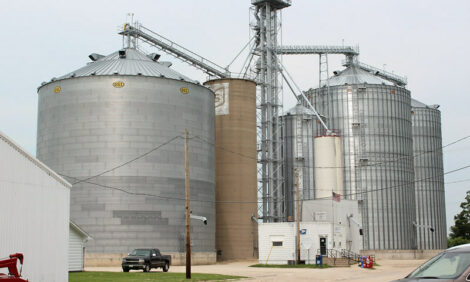



Market Preview: Reasons for Decline in Hog Prices
US - In this week's "Market Preview" published in National Hog Farmer magazine, Steve Meyer discusses three reasons why hog prices have been forecast to decline.It is World Pork Expo week and it will certainly be interesting to see the status of pork producers’ outlooks and attitudes. I think a major determinant will be whether or not they forward-priced hogs this spring. Those who did are likely to think this is a good business. Those who didn’t will almost certainly not have such a positive view.
The potential for profits over the next 12 months has taken a huge hit since March. In late winter, futures markets were offering profits of over $10/head for hogs sold through March 2012. But the selloff of Lean Hogs (LH) futures and continuing concerns about the 2012 corn crop have driven projected losses to $11.82/head for hogs sold through May 2012 (see Figure 1). The forecasts for 2011 have dimmed as well. My numbers indicate losses of nearly $5/head for this year, compared to $10.25/head profits in 2010.

The main driver has been lower cash and LH futures prices. As Figure 2 shows, the huge rally in LH futures that began in late November peaked out in late March. Since, June and July LH futures have slipped right back to their late-November levels. The decline since late March has amounted to $14 to $15/cwt., carcass, for these two contracts, lowering per head revenue by roughly $30.

Three Reasons for Decline
First, the unprecedented demand levels that were implied by LH and Live Cattle futures last spring have not materialized, not that they ever really had a chance of doing so. Those $100-plus summer LH futures were very likely going to require year-on-year demand increases of 20 per cent or more in a world where 3 per cent is a very big deal.
Was it speculation? Yes, to a great degree, I think it was. Is that good? Your answer probably depends on whether you sold or not. It appears that everyone decries speculation when they are on the wrong side of any price moves it causes, but we must be careful not to run speculators out of these markets. They provide the liquidity needed to guarantee we have a chance to buy or sell on a timely basis without moving the market. I think hog producers simply need an attitude change from “those specs are ruining things“ to “the specs are paying big; I believe I’ll take their money!“ They have indeed offered some great opportunities in recent years.
The second driver of this price decline has been higher-than-expected production levels across the board. A quick perusal of this week’s production and prices tables shows that year-to-date pork production is up more, relative to last year (+1.2 per cent), than are either of the other two major species (beef is up 0.2 per cent and chicken is up 1.1 per cent). The primary driver of pork production, of course, is still average weights. But the point is that higher supplies are just as much the pork industry’s fault as they are the fault of a beef industry, who keeps finding feeder cattle that were not supposed to exist, and a chicken industry that seems to not really care about losing boatloads of money. An old saying about rocks and glass houses comes to mind.
Finally, it certainly appears that the robust growth of pork and meat demand that we witnessed last winter has at least moderated. The most often cited culprit is high gasoline prices that have reduced the discretionary dollars available to consumers. I agree, gas prices have been a factor, but the availability of very low-priced chicken relative to the other species has certainly played a role in cutout values that last week were lower than at any time since mid-February.
As has been the case for much of the last three years – it is not a matter of hog prices being low but, rather, of hog production costs being high. We can hope that fact ends soon, but it now appears such hopes cannot be realized until 2012 at the earliest.










